
Isaak J. Liptzin
Some of New York City's drinking water begins in nameless streams in the mountains. Then it travels through some of the most critical infrastructure the city has.
Marjorie Miller loves water. Sitting at her desk in the Middletown Town Hall in the heart of the Catskill Mountains, wearing sandals with little bicycles on them, Miller just wants to wrap up her long workday as town supervisor and head to the local rec center pool for a swim.
“I love the Catskills, you know, I love it. And one of the things I love most is the water. I love jumping in the streams,” she says, then adds with a laugh: “I guess I’m not supposed to, I’ll pollute the water!”
Miller was born in a small village in the Catskills, but spent two decades living in New York City working as an actress doing, as she sums up nicely, “Shakespeare, Guiding Light.” She talks fast and with her hands like any New Yorker. And with her Catskill roots and experience among what some up here call the “flatlanders” in the city, she understands New York’s water system better than most.
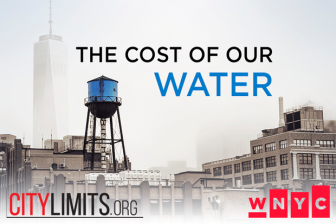
All this week, a joint City Limits-WNYC reporting partnership will broadcast and publish stories about New York City's incredible water system and the challenges it faces.
“I lived in New York for 21 years. Every time I saw a fire hydrant that was just going without any kids playing it, it drove me crazy,” she says. “I don’t know if folks in New York City know where they are getting their water. I don’t know if they appreciate it.”
New York City gets much of its drinking water, often called the best drinking water in the nation or “the champagne of drinking water,” from the area near Miller’s home, about a two-and-a-half hour drive north of the Bronx.
While rich Californians spraypaint their lawns green as engineers scramble to devise solutions to the depleting West Coast water supply, New Yorkers seem to take their taps for granted. But the 50,000 people who live in the Catskill/Delaware watershed are acutely aware of how the 8 million people in the five boroughs get their drinking water. It’s from their backyard.
In fact, this year is the 100th anniversary of New York City drinking Catskills water. For the last century, these rural villages in the mountains and the always-busy New York City have been bound together by water pipes.
The city’s involvement in the Catskills, especially its acquisition of huge tracts of land — originally by eminent domain and since 1997 through a willing buyer, willing seller system — has often caused conflict. In fact, many people up there curse the Department of Environmental Protection, shortened to “the DEP,” sometimes even swapped out for a broader cursing of “the city.” But even the loudest of the haters understands millions of people south of them depend on the water. It’s an odd relationship, but one that everyone seems to agree has gotten better in recent years.
While some New Yorkers may not care where their water comes from, an amazing amount of work — and money from your water bills — goes into protecting the watershed so the “champagne” keeps flowing.
An empire of water
New York City’s drinking water begins as a trickle on the side of a mountain, entering a stream small enough it doesn’t have a name, eventually making its way to a stream or creek big enough it does have a name, on to one of the six reservoirs in what the city calls the West-of-Hudson Watershed—the combined Catskills/Delaware system, covering parts of five counties and supplying up to 90 percent of what the city uses daily (the rest is from smaller system east of the Hudson).
The water leaves a reservoir and enters either the Catskill Aqueduct or the Delaware Aqueduct, flows down massive hundred-year old pipes to reservoirs in the East-of-Hudson Watershed in Putnam, Rockland and Westchester Counties and eventually travels down to the Bronx and then the rest of the city.
Gravity does most of the work. The DEP’s job is to do just what its title says: protect. And that means an astounding array of activities.
The city has 200 armed DEP police patrolling its upstate lands. They’ve built enormous labs staffed by hundreds of people to test the water. They have a forestry management division. A scuba team. Fish experts. Weather experts. Scattered across the mountains, the city constructed a network of what it calls “snow pillows,” which are big mattress-type contraptions that measure the weight and moisture content of snow so the DEP will know how much water will make its way to its reservoirs when it melts. According to DEP’s watershed spokesman Adam Bosch, the city has “one of the most advanced weather models in the country that we helped develop with the National Weather Service.”
To detect leaks in their aqueducts, the DEP shoots a camera missile through the water to take 360-degree photos of the pipe to find cracks. Its forestry division works to maintain a diverse tree population so streams are kept cool and protected by violent weather. Currently, it’s concerned with the emerald ash borer, a bug wreaking havoc on ash trees in Western New York.
Over the past 18 years, in the Catskill/Delaware watershed, the city has upgraded 4,603 septic systems, built three wastewater treatment plants, conducted 302 projects on streams, built 30 sand and salt storage facilities and countless other upgrades to farms and houses to control runoff.
All this is done to keep clean drinking water flowing down to the city.
The costs are considerable. As of last month, the DEP reported spending $1.7 billion on watershed protection programs. It spends about $70 million a year on payroll dealing with water supply.
On top of that, one of the DEP’s biggest costs is paying property taxes. The DEP spends about $157 million in county, town, village and school taxes on all of its upstate land.
If operational expenses are considerable, capital costs are enormous. The DEP recently built a $1.4 billion ultraviolet plant to zap any possible pathogens out of the Catskill/Delaware water. That plant is part of a DEP capital budget that every year dwarfs most other city agencies. In de Blasio’s executive capital budget for 2016, the DEP is budgeted $3.68 billion of a grand total of $13.1 billion. Its 2015 expense budget was $1.65 billion, following only the DOE, NYPD, FDNY, Children’s Services and Social Services.
Much of DEP’s spending, however, is done with the goal of avoiding an order to spend even more.
Not a passing FAD
One phrase everyone in the Catskills seems to know that almost nobody in the city has heard about is “filtration avoidance.” That is the motive behind what the DEP is currently doing in the Catskills.
New York City’s Catskills/Delaware system is, along with the Boston, Portland and San Francisco watershed, one of a handful of major U.S. Water systems that does not filter its water. Sure, sticks and fish are caught in screens leaving reservoirs and some chlorine and fluoride is added before it enters the city system, but the system is mostly natural. On a recent tour of DEP facilities in the watershed, staffers repeatedly said New York City’s drinking water system is “the envy of the world.” It is. California is in a drought, but on a recent visit to the Ashokan Reservoir, DEP staffers boasted the reservoir levels were .01 percent higher than normal, meaning right now New York City has more water than it needs.
The reason New York City is allowed to not filter Cat/Del water is because the Environmental Protection Agency says it doesn’t have to. Under the 1986 update to the Safe Drinking Water Act, surface drinking water is required to be filtered. Exceptions were granted if a city could prove to the EPA that it could protect the water and keep it suitable for drinking.
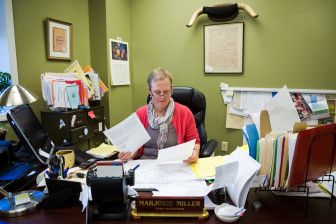
Isaak J. Liptzin
Middletown supervisor Marjorie Miller believes city residents take the watershed, and the people whose lives are most affected by it, for granted.
In its smaller watersheds, the Croton system east of the Hudson, the city failed to protect the Croton water, at least by federal standards. That watershed sits in Rockland, Putnam and Westchester counties and because there’s so much development in the area — roughly 200,000 people live in that watershed — the feds told the city it needed to filter. After putting it off for years, the city finally built a more than $3 billion plant in the Bronx that recently went online.
On average, the Catskill/Delaware watershed provides 90 percent of the city’s drinking water, compared to 10 percent from Croton. So the DEP estimates that if the feds forced them to build a filtration plant for the Catskill water, it would cost $10 billion. In a recent interview, former DEP Commissioner Chris Ward said the cost would be “catastrophic for the city,” estimating it would be even higher, $15 or $20 billion.
Needless to say, in the Catskills, the DEP is bending over backwards to protect the water so it will not have to spend those billions on a plant. Instead, they have started a number of initiatives to protect the water, headlined by what it calls its Land Acquisition Program (LAP). Since 1997, the city has spent $438 million to protect 135,149 acres of land in the Catskill/Delaware watershed, either through outright purchase or through conservation easement, a permanent restriction on how land is used. That’s a total land area greater than Manhattan, Brooklyn and Queens combined. And it is actively buying more.
Because the watershed is a “living watershed,” the main reason for buying up and protecting the land is the people within it. Runoff from farms, manufacturers and homes can bring pathogens into the water supply. By buying up and preventing development, the DEP reduces the risk of pathogens like Cryptosporidium and Giardia from entering the water. Along with state land and other protected lands, 37.5 percent of the Catskill/Delaware watershed is protected from development. In some areas the DEP views as most critical to protecting the water — near reservoirs and major streams feeding those reservoirs — the protected land is above 50 or 60 percent.
Land locked
The city’s Land Acquisition Program prospered greatly when the economy went to hell in the 2007-08 recession. Their offering prices were based on a previous three-year average, so many landowners in the watershed took advantage of the high bid and sold.
“When the economy went down in 2008 to 2010, we had some of our best years ever in terms of acres acquired. That has tailed off again. Over the life of the program, we’ve averaged about 8,000 acres acquired per year,” says David Warne, assistant commissioner of the DEP’s Bureau of Water Supply.
But some Catskill officials argue that the DEP’s buying has hurt economic development because the more the city buys; the less land is available for development that can sustain local economies.
“It’s rapid, it’s steady,” Miller says. “It feels suffocating sometimes.”
Dean Frazier, commissioner of watershed affairs for Delaware County, thinks the DEP’s land buying is making an already bad problem worse. He says the city’s buying presence has created more competition for land, causing prices to rise. Young families are priced out, while well-off New Yorkers are buying second homes. In Middletown, according to the 2010 Census, about 40 percent of homeowners are second homeowners, up from 36 percent in 2000.
“It exacerbates the poor state of affairs of Upstate New York. Because we are dying,” he says. “We are circling the bowl.”
If a property owner wants to develop land in the watershed, the DEP has to sign off on the project to make sure the rules and regulations in its 114-page book are followed. Those include stipulations on building near any stream or waterway, as well as rules on installing septic systems and home heating oil tanks or building impervious surfaces like driveways and rooftops.
“Economic development and redevelopment opportunities in the watershed are few enough that the added time, cost and uncertainty caused by DEP’s application of the stormwater regulations has a very significant impact,” reads the comments that the Coalition of Watershed Towns recently sent to the New York State Department of Health, which is currently conducting a review of water quality issues in the watershed.
Development upstate is not exactly booming anywhere, but watershed folks argue additional regulations mean any potential developers will avoid the watershed for a location just outside its boundaries. Oddly enough, the opposite seems to be true with second homeowners. Well-off New Yorkers buying second homes want to buy in the watershed because it is over-regulated, meaning it’s land that will stay quiet and likely never overdevelop.
Miller says towns can’t depend on these second homeowners.
“The second homeowner economy which we’ve come to depend on in the last 25 years is not entirely dependable,” she says. “They contribute economically, they shop here, they go to the liquor stores, they go to the restaurants, but you know, we need volunteer firemen. We need local folks who do the things local folks do and we need kids in our school.”
One major criticism Miller has for the DEP is its practice of buying up huge tracts of land, some of which is developable and far from water. She wants the DEP to start a program where it buys land along streambeds, but sells off or allows development on land that does not pose a risk to the water supply.
Warne said the DEP is starting a $5 million pilot at Schoharie Basin to test that out. He objects to the idea the DEP is hurting the economies of watershed towns.
“I think the notion that somehow our land acquisition program, our regulatory programs are squashing what would otherwise be a robust and vibrant economic region really doesn’t hold up,” he says.
As part of the filtration avoidance determination, which expires in 2017, the DEP has to solicit — send letters to landowners asking if they’d like to sell — 300,000 acres of land through 2017. Warne said they are on target to hit that goal. As for appeasing the feds and getting an extension on filtration avoidance, Warne is confident.
“This program has been in place for 20 years. We’ve demonstrated it’s a sustainable way to protect source water quality,” he says. “We have the right mix of programs and we’ve developed partnerships with local entities so we can continue to implement the programs.”
Ancestral hatred
It’s wing night at Summerfields in Margaretville in Delaware County and a few locals are drinking on the patio out back after work. “Oh I hate them. Everybody hates them,” said 46-year-old contractor Brian Robertson of the DEP.
That’s not exactly true. We spoke with a sheep farmer in Bovine, an ex-New York City resident, who said he loved the DEP because they upgraded his septic system and drinking water for his animals. His neighbor, however, who runs a beef farm, said he’d burn his house and barn to the ground before selling his 200-acre tract to the DEP.
“They don’t want any new development. They don’t want anybody here anymore,” Robertson continues. “It’s either a trillion dollar filtration system or try to get people out of here.”
Robertson’s friends agree and for a while they talk over each other and rant about the DEP.
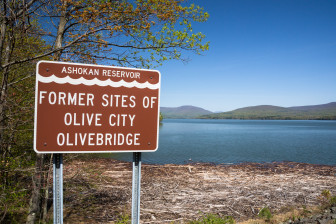
Isaak J. Liptzin
There remains resentment in the watershed over the original takings that permitted New York City to create one of the world's finest drinking-water systems.
Part of their resentment is not wanting to be told what to do. They say the city’s rules and regulations clash with their way of life, like the simple task of not being allowed to remove fallen trees from the streams in their backyard.
“They’re making rules and they have no clue what goes on in this area to survive. That’s my biggest complaint with everything. Come here, live here and then make your rules,” says mechanic Jim Beers.
If Warne is right that some of the resentment of today’s DEP is overblown, it might be because it’s not about today’s DEP at all, but a long history of the city taking what it needed from upstate counties. The self-proclaimed “knuckleheads” at the bar all admitted the relationship between locals and the DEP has gotten better in recent years — especially after the DEP helped towns devastated by Hurricane Irene — but scars from generations past have not completely healed. A hundred years ago, to build reservoirs, the city used eminent domain to depopulate villages. They erased towns, dug up cemeteries. Locals tell stories, like the one about the villager who refused to leave and stood on his roof until the reservoir waters reached his ankles.
At the Ashokan Reservoir, there’s a sign: “Former Sites of Olive City, Olivebridge.” Overlooking the reservoir on a recent visit, DEP Natural Resources Division Chief Ira Stern said it’s an “interesting relationship.”
“The sacrifices were tremendous, it was a transformative time,” he says, following up immediately by that DEP mantra: “It’s created a water supply that’s really the envy of the world.”
The rocky relationship had a turning point in 1997 with the creation of a mammoth Memoranda of Agreement between the people of the Catskills and the City of New York. The MOA said this “new era of partnership” would enhance the “quality of the New York City drinking water supply system and the economic vitality and social character of the Watershed communities.” The MOA created the Land Acquisition Program, as well as rules about what they city can and can’t buy.
Eighteen years after the MOA, the water has never stopped flowing to taps in the five boroughs, but watershed towns are struggling mightily. Recently released Census stats on population changes across New York State show widespread population loss upstate. The five counties of the watershed are not only all doing bad, they are some of the worst statewide. For percentage decrease in population, from 2010 to 2014, watershed counties Schoharie, Delaware and Greene rank first, second and fourth in the state, respectively.
You’ve drunk it. Now visit it.
This region that was has at times fostered sustainable economies in farming, tanning, timber and grand hotels has been struggling to find a new identity. For many in the watershed, the path to renewed economic vitality is tourism.
“We have to learn to become better at the park business,” said Alan White of the Catskill Center. And there’s no way the area will capitalize on its tourism potential without making some use of the land DEP has purchased to protect city water.
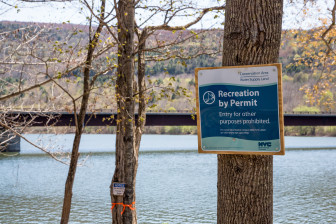
Isaak J. Liptzin
DEP has done a lot to open watershed land to recreation. Some officials in watershed towns say those efforts will fall short if the city doesn't do more to promote those resources.
Perhaps the biggest reason the DEP’s relationship with watershed communities has improved is by moving to facilitate more recreation in the watershed. At the time of the 1997 MOA, recreation on city-owned property was severely limited. Hikers were not even allowed to cross from state-owned land to city-owned land without a permit from the DEP until 2008. Boating was also not permitted on reservoirs in 1997, but kayaking and canoeing is permitted now — and the DEP is currently doing a pilot of small electric motorboats on Cannonsville Reservoir.
“We’ve come a long way since 1997 when the watershed agreement was signed,” says DEP’s Stern. “We’ve evolved over the last 20 years.”
White of the Catskill Center says more can be done.
“For example, you’re an urban person. you’ve just driven two-and-a-half hours, you’ve gotten to the Catskills and you’ve identified a 500-acre parcel of city land that’s open to the public, but when you get there, there’s no parking lot and there’s no trail. The average urban person isn’t dying to park in a ditch and bushwhack across an unimproved piece of property,” he says.
The DEP has partnered with groups to create trails. But while the agency has shifted toward allowing more recreation, it is not doing much to promote it. That is left to the individual counties, but local officials in places like Delaware County that rely on tourism struggle to find the funds to advertise—especially in the expensive New York City media market from which they want tourists to travel.
The DEP does do some promotion online through a new Facebook page and soon through an e-mail blast to 125,000 hiking and fishing permit holders, but its marketing budget is practically nothing. In Blasio’s executive budget for 2016, the DEP’s advertising budget is $49,500.
Warne admits there’s only so much they can do.
“What can we legitimately ask ratepayers to pay for in terms of tourism promotion for this region? That’s just a question we have to ask ourselves and find that balance,” he said.
For Miller, having New Yorkers understand where their water comes from and all that goes into keeping it safe would help bring some much-needed attention to the Catskills.
“I had this thought that we should just take all the used toilets from all throughout the county and line them up on the Shavertown Bridge at one point and say, ‘We’re going to crap in your water until you start paying attention to us,'” she says with another laugh.
She follows that up with a less controversial idea.
“I want to do T-shirts that say, ‘New York City loves the Catskills, New York City drinks the Catskills,'” she says. Pointing to a reporter from the flatlands, she says: “You drink the Catskills.”


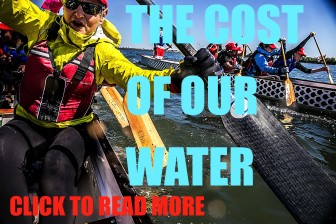







7 thoughts on “City’s Watershed Protection Plan Seeks Difficult Balance Upstate”
See Deep Water: Building the Catskill Water System on DVD. Trailer available at:
http://www.documentaryworld.com/deepwater.html
And somehow the Mayor thought that he could persuade these people to vote for his preferred candidates for NYS Senate.
While “Upstate Economic Development” may be an oxymoron, you have to understand nothing good has been happening upstate since WWII ended. IBM pulled out of Kingston and Binghamton, Bethlehem Steel out of Buffalo, Kodak, and others have ‘matured’. Population in search of a job is leaving in every direction, and all we do is kill fracking-their only shot at a living. Thank you much, NYC!
I am one of those second homeowners who are all too often vilified. I drink NYC water when in the City and I pump the same stuff out of the ground, unfiltered and untreated when in Delaware County. I sincerely appreciate the Catskills and want the area respected and preserved. I wonder how it is that some full time residents of upstate communities could advocate fracking as “their only shot at a living” when that living would destroy the very ground on which they live. I understand the economic need but I would much rather see more of my NYC taxes go to support the economies of upstate communities than to have the environment despoiled forever by unregulated greed.
“Unregulated Greed”, spoken like a true Statist. Do you understand the mean income of your neighbors in the mountains, or are they just “Deplorable’s”? Do you think they are greedy because they wish to claim a clean energy resource from under ‘their’ property like they do in Pa., to maybe send their kids to college? Pay their taxes? Buy dinner? Do you even understand what hydro-fracking really entails? Why is it that science is acceptable when it supports you view of the world but when its contrary to your highly educated vision they are greedy? You snow flakes are just so predictable.
Yes, science tells us what hydraulic fracturing entails. And real world experiences tell us how this practice threatens groundwater resources. The extraction industries have not yet even figured out how to dispose of the fracking wastewater (now called “produced water”, OMG rebranding at it’s best). And no, my neighbors are not deplorables. We are together Americans who must rely on a healthy environment for ourselves and our kids. We are smart, adaptable, and can learn new skills. Money for dinner out? Reinvent yourself. I’m a senior. If I can do it, so can you. BTW, I would NOT refer to fracked oil or gas clean energy sources. Big oil&gas doesn’t give a rats ass about us, so stop shrilling their talking points.
Pingback: UrbaNERD: Go Meet Your NYC Drinking Water | NYC Informer
Pingback: Summer Begins | middletowndelcosuper